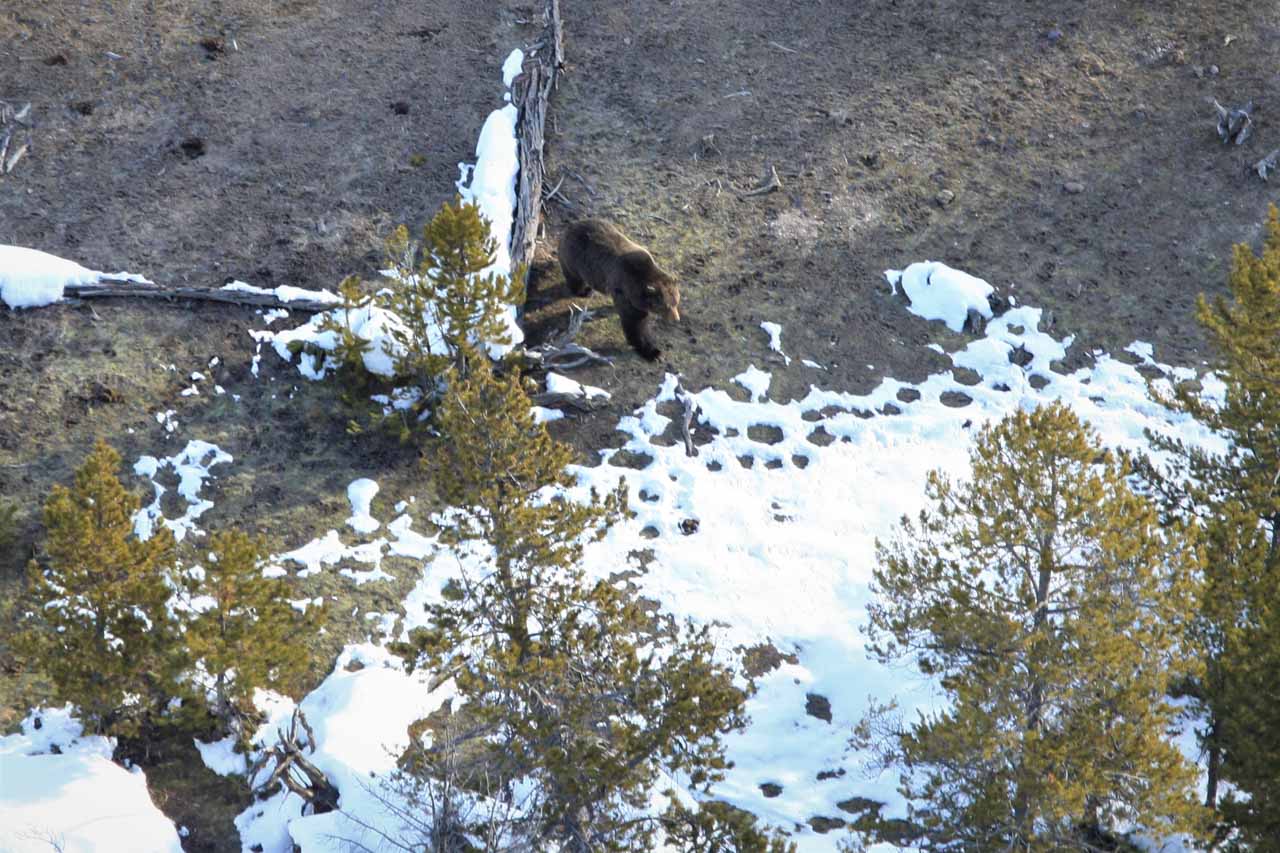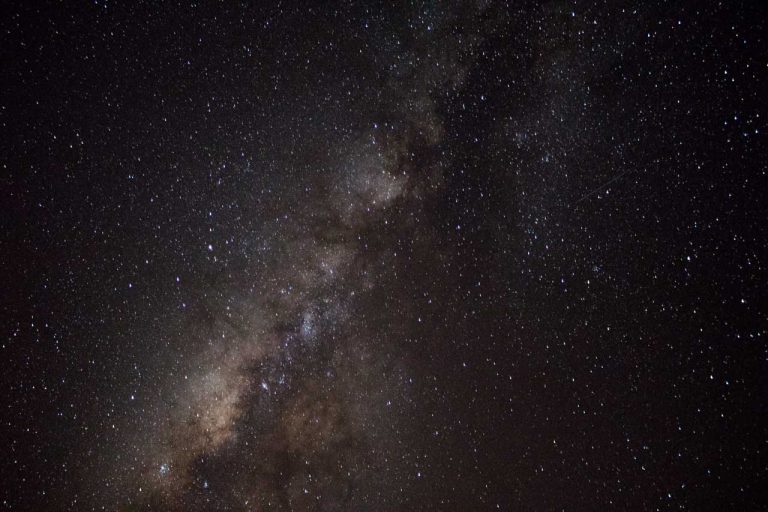NEWS: The First Grizzly Bear of 2020 Has Been Spotted in Yellowstone National Park
First Yellowstone Grizzly Bear Sighting of 2020
Yellowstone National Park is slowly waking up after a long winter’s sleep. On March 9, the National Park Service announced the first grizzly bear sighting in Yellowstone of 2020.
The bear, fresh out of its den, was spotted near Grand Prismatic Spring by wildlife biologists from the air during a radio telemetry flight. This sighting was one day earlier than last year’s first sighting.
In its press release, Yellowstone National Park says that “male grizzlies come out of hibernation in early March. Females with cubs emerge in April and early-May. When bears emerge from hibernation, they look for food and often feed on elk and bison that died over the winter.”
Famished after spending months holed up in their dens, the grizzlies are often aggressive and protective while feeding on those carcasses.
Kerry Gunther, the bear management biologist at Yellowstone, urges springtime visitors to be careful: “Now that bears are emerging from winter dens, visitors should be excited for the chance to view and photograph them, but they should also treat bears with respect and caution.”
She continued by clarifying that although “many visitors think bears are ravenously hungry and more likely to attack people for food after emerging from hibernation, […] almost all bear attacks result from surprise encounters when hikers startle bears at close distances and the bears react with defensive aggression.”

Yellowstone Grizzly Bear Safety
Therefore, all outdoor recreationists, including hikers, snowshoers and skiers, should travel around Yellowstone National Park in groups of three or more. They should make noise to alert the bears of their presence and carry bear spray.
It’s also important to note that while carrying firearms is, in fact, allowed inside the park, it is illegal to discharge a firearm. As such, you cannot use a gun to protect yourself against grizzly bears.
Bear spray has been proven as the most effective means of deterring bears that are defending their food sources and/or cubs.
Here are some basic guidelines for protecting yourself when exploring Yellowstone grizzly bear country:
- Always carry bear spray and make sure it’s readily accessible.
- Be aware of your surroundings.
- Make noise.
- Travel in groups of three or more.
- Avoid hiking, skiing or snowshoeing at dawn, dusk or night.
- Never run from a grizzly bear!
- Stay at least 100 yards (or meters) from both black bears and grizzly bears.
You can find more detailed information about what to during a grizzly bear encounter in this blog post. It offers tips for dealing with defensive and aggressive grizzly bears, how to use bear spray, and more.
Grizzly Bear Management Area Restrictions
Today, March 10, Yellowstone National Park has started restricting certain visitor activities in locations with a high density of bison and elk carcasses. These are the areas with lots of bear activity this time of year.
To reduce encounters between grizzlies and humans, these restrictions include complete area closures, individual trail closures, a mandatory minimum group size of four people or more, and temporary day-use only restrictions.
You can find more about Yellowstone’s bear management areas and restrictions here.






